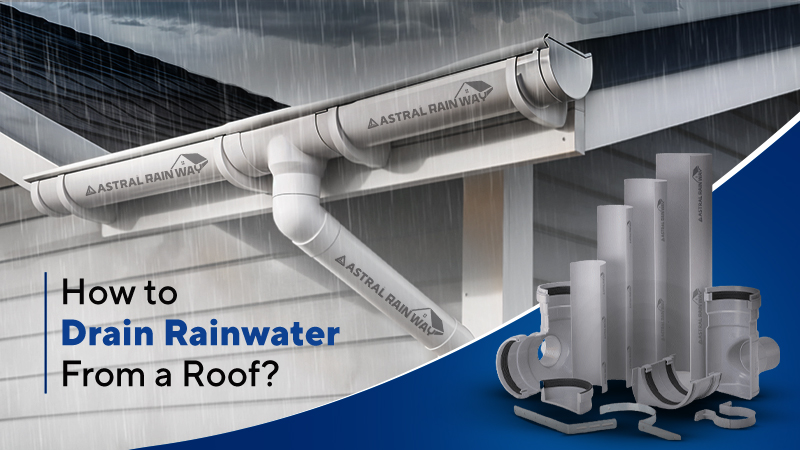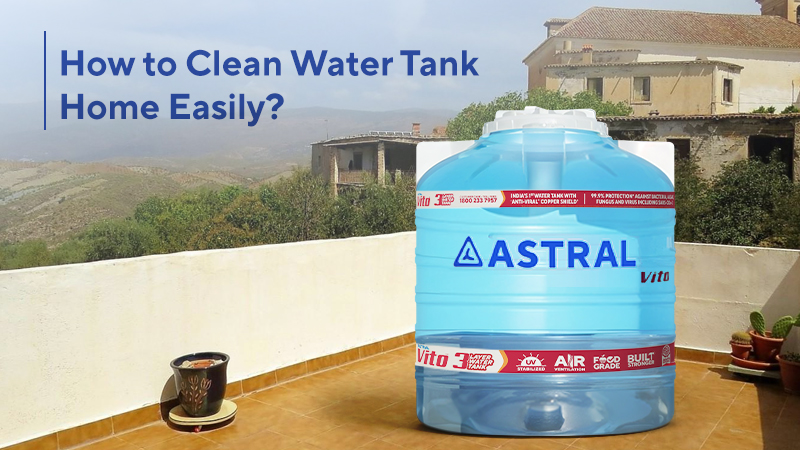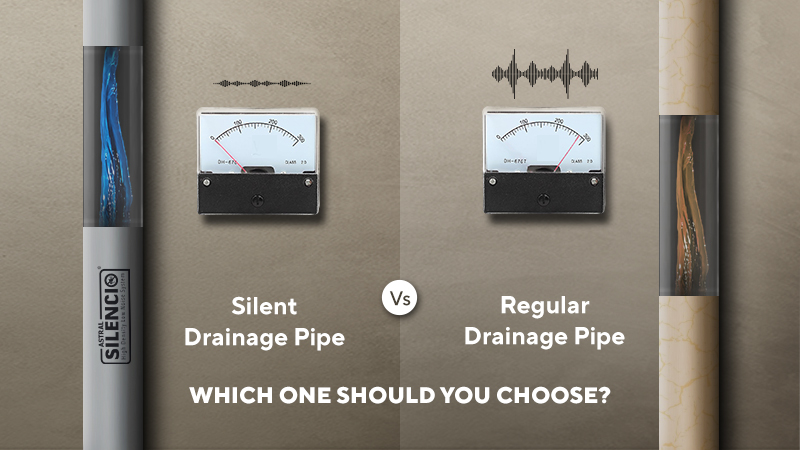
07 Jun 2025
How to Drain Rainwater From a Roof?
In many parts of India, especially during the monsoon season, rain can be heavy or unpredictable. If not properly managed, rainwater can collect on your roof or terrace and cause damage over time. This is why having a proper roof drainage system is so important. Whether it is a modern city apartment or a traditional village home, every house needs a way to drain rainwater safely. If ignored, water can seep into walls, ceilings or even weaken the structure. In this blog, we will explore the importance of roof drainage pipe, common problems people face, different ways to drain rainwater and how to maintain your system.
Why Roof Drainage Matters?
When rainwater collects on rooftops without proper direction, it leads to major problems. A working roof drainage system prevents water from pooling on the roof or running down walls, which can weaken the plaster, cause cracks and even lead to seepage into interiors. In India, where many areas experience heavy downpours during monsoon, this becomes even more important.
Overflowing water can damage ceilings, create slippery surfaces and affect the foundation of the house. A properly installed house drainage system ensures that rainwater is safely diverted away through pipes and a drainage channel. This increases the life of your building and supports water harvesting, especially in regions where water scarcity is a concern.
Common Roof Drainage Problems
Even the best systems can face issues if not maintained well. One of the most common problems is clogged gutters, usually due to dry leaves, dirt or bird nests. This blocks the water path and causes it to spill over the edges. Poor roof slope is another issue, where water does not naturally move towards the drain pipe.
Many homes also use undersized gutters or pipes that cannot handle heavy rainfall, leading to overflow. Old or cracked pipes can cause leakage inside the ceiling or walls. In colder parts of India, like the Himalayas, melting and refreezing snow can block roof drainage channels. These problems can lead to mould growth, slippery areas around the house or long-term structural damage. Regular checks and early fixes are the key to avoiding such costly troubles.
Ways to Drain Rainwater from a Roof
There are several effective methods to channel rainwater away from your roof and prevent structural damage:
1. Gutters and Downpipes: The most common solution, gutters run along the roof edge and carry rainwater through drain pipes to the ground or storage tank.
2. Scuppers: These holes on flat roofs allow water to flow off the roof into external pipes or splash blocks.
3. Internal Roof Drains: Found in large buildings, these are built into the roof itself and connected to a house drainage system inside the walls.
4. Sloped Roof Systems: On sloped roofs, water naturally flows towards the edge, where it is collected into half-round or box gutters connected to drain pipes.
5. Drainage Mats and Splash Blocks: Placed at ground level to safely redirect water away from the building’s base.
6. Astral Rainway System: This advanced roof drainage solution features half-cut pipes that capture more water efficiently. Placed along roof edges where water collects most, Astral Rainway helps prevent overflow, reduces water wastage and protects your building from seepage and structural damage. Its design supports sustainable water use while ensuring a strong and lasting roof drainage system.
Choosing the Right Drainage System
Every roof is different, so choosing the right system matters. Flat roofs need internal drains or scuppers, while sloped roofs work better with gutters and drain pipes. The size of your roof drainage system should match the amount of rainfall your area receives. In cities with high rainfall, large pipes and wide gutters are essential.
uPVC materials like those used in Astral Rainway are rust-free and last longer in Indian weather. Systems with better slope alignment and wide openings can carry more water without blocking. For homes focused on sustainability, advanced systems like Astral Rainway also help in rainwater harvesting. Consulting a plumber or roofing expert can help you select the right house drainage system based on your specific building needs.
Maintenance Tips for Roof Drainage Pipe
To keep your roof drainage working smoothly, regular cleaning and checks are important. Clear out leaves and dirt from gutters at least twice a year, especially after the monsoon. Make sure your drain pipes are not blocked and water flows freely.
Look for signs like rusted brackets, sagging gutters or water stains on walls. For uPVC systems like Astral Rainway, inspect joints and fittings to ensure they are sealed properly. If you notice slow drainage, it could mean a clog or a slope problem. Routine maintenance of your house drainage system helps avoid bigger issues like leaks, damp walls or even structural weakening. A little attention today can save you from expensive repairs tomorrow.
A strong and well-maintained roof drainage system is essential for every Indian home, especially with our varied climate and strong monsoons. Whether it means removing leaves from your gutter or installing an advanced system like Astral Rainway, every step counts. These systems protect your walls and ceiling, help reduce water waste and support rainwater harvesting.
With the right drain pipe system and regular care, you can keep your home safe, dry and strong for years to come.
Read our blog on 8 Things You Should Know About Drainage & Sewerage Pipes
-

27 Nov 2025
Advantages of Using Plastic Pipes in Bathrooms -

21 Nov 2025
How to Clean Water Tank at Home Easily? -

15 Nov 2025
Silent Drainage Pipe VS. Regular Drainage Pipe: Which One Should You Choose? -

08 Nov 2025
Why Underground Cable Ducting is Essential for Modern Infrastructure? -

01 Nov 2025
Why Low-Noise Pipes Are Essential for Corporate Spaces?





